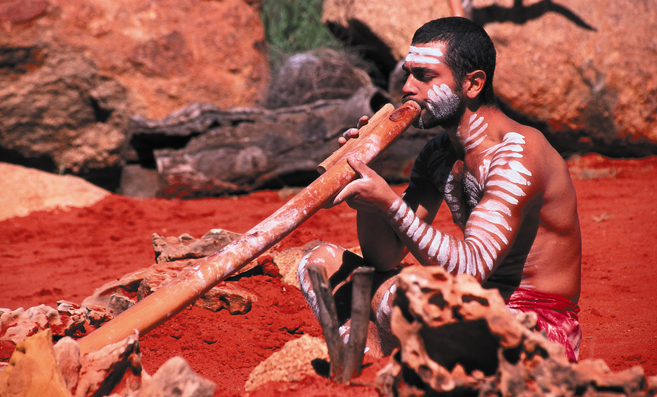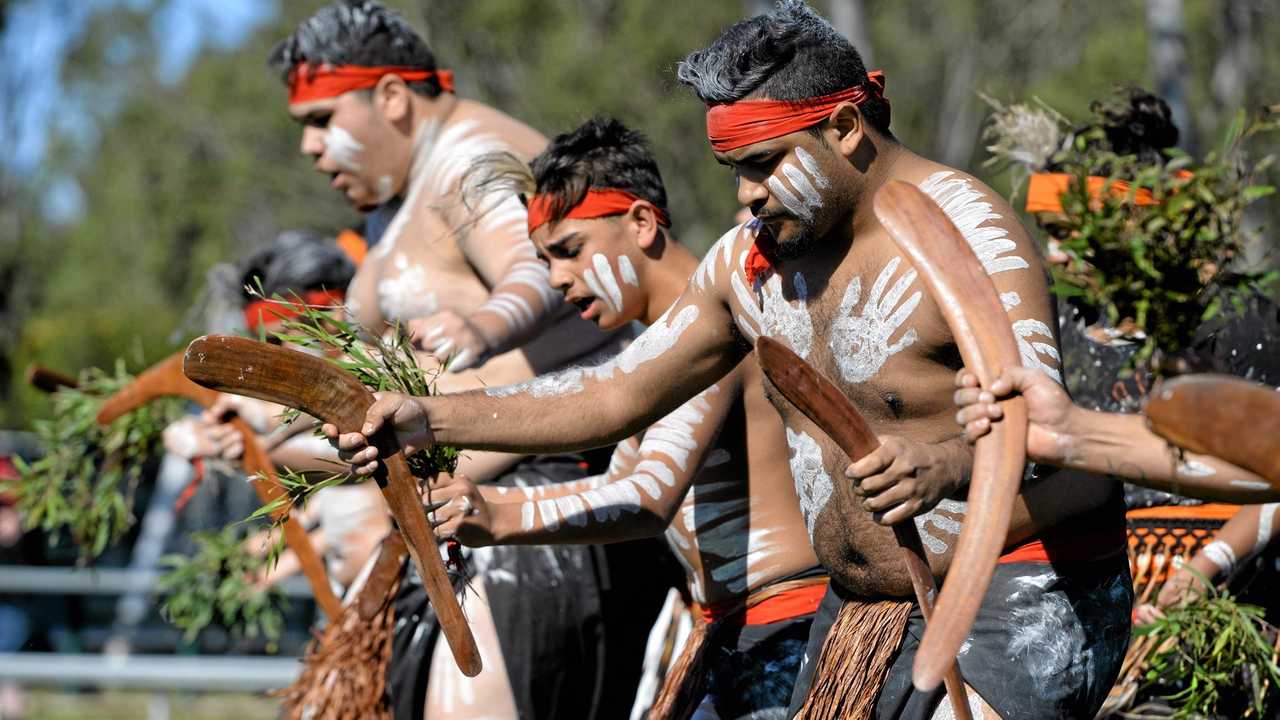A Taste of Tradition: Exploring Culinary Expressions and Indigenous Tribes in Australia
A Taste of Tradition: Exploring Culinary Expressions and Indigenous Tribes in Australia

Australia, a land of diverse landscapes and vibrant cultures, boasts a rich culinary heritage deeply intertwined with its Indigenous history. For millennia, Aboriginal and Torres Strait Islander peoples have thrived on the land, developing unique and sustainable food systems that respect the environment and celebrate the bounty of nature. This article delves into the fascinating world of Indigenous culinary expressions, exploring the diverse ingredients, cooking techniques, and cultural significance that make Australian Indigenous cuisine truly special.
The Land as Larder: A Foundation of Sustainability
Related Articles: A Taste of Tradition: Exploring Culinary Expressions and Indigenous Tribes in Australia
- Hopping Into Art: Exploring The World Of Kangaroo Artwork
- The Bush Rat: A Closer Look At This Common, Yet Misunderstood Rodent
- Unlocking The Stories Behind Aboriginal Australian Names: A Journey Through Culture And Identity
- Unpacking The Stories Behind Aboriginal Australian Surnames: More Than Just Names
- A Taste Of Paradise: Exploring The Vibrant World Of Australian Fruits
The foundation of Indigenous Australian cuisine lies in the land itself. For thousands of years, Aboriginal and Torres Strait Islander peoples have lived in harmony with their environment, developing deep knowledge of the unique flora and fauna of their respective regions. This intimate understanding of the land translates into a diverse and sustainable food system, where every ingredient plays a vital role in the ecosystem.
From Bush Tucker to Modern Cuisine: A Journey of Flavors
The term "bush tucker" encompasses the wide array of edible plants, animals, and insects found in the Australian wilderness. This diverse selection includes native fruits like quandong, finger lime, and Davidson plum, along with bush foods like wattle seed, saltbush, and native yam. These ingredients offer a unique flavor profile that is both distinctive and delicious, often described as earthy, citrusy, or slightly sweet.
Traditional Cooking Techniques: A Legacy of Skill and Innovation
Indigenous Australians have developed ingenious cooking techniques that utilize the natural resources available to them. Techniques like fire-roasting, smoking, and pit cooking are not only efficient but also enhance the flavor and texture of the ingredients.
- Fire-roasting: This method, often used for larger animals like kangaroo and emu, involves cooking over an open fire, imparting a smoky and savory flavor.
- Smoking: Fish, meats, and vegetables are smoked over wood chips, adding a unique aroma and preserving the food for extended periods.
- Pit cooking: A traditional method of cooking in an underground oven, pit cooking utilizes hot coals and earth to slowly cook food, resulting in tender and flavorful dishes.

Cultural Significance: Beyond Food, a Celebration of Identity
Indigenous Australian cuisine is more than just a collection of recipes; it is a powerful expression of cultural identity, storytelling, and connection to the land. Every ingredient, every cooking technique, and every dish holds deep cultural significance, passed down through generations.
- Sharing and Ceremony: Food plays a vital role in Indigenous ceremonies and gatherings, symbolizing unity, generosity, and respect for the land and its resources.
- Connection to Country: The act of foraging for bush tucker and preparing traditional meals reinforces the deep connection Indigenous Australians have to their ancestral lands.
- Sustainability: Indigenous food systems are inherently sustainable, emphasizing resourcefulness, respect for the environment, and a deep understanding of the natural world.

Modern Interpretations: A Fusion of Tradition and Innovation
In recent years, there has been a growing movement to celebrate and revitalize Indigenous Australian cuisine. Modern chefs are incorporating traditional ingredients and techniques into their menus, creating innovative dishes that showcase the unique flavors and cultural heritage of Indigenous Australia. This fusion of tradition and innovation is not only delicious but also helps to raise awareness and appreciation for Indigenous food systems.
Examples of Culinary Expressions:
- Bush Tucker Pizza: This modern twist on a classic dish features a variety of bush tucker ingredients like wattle seed, quandong, and native pepperberry, creating a unique and flavorful pizza experience.
- Kangaroo Steak with Lemon Myrtle: Kangaroo meat, a staple in Indigenous cuisine, is often served with lemon myrtle, a native herb that adds a citrusy and aromatic flavor.
- Bush Tucker Ice Cream: A refreshing and innovative dessert, bush tucker ice cream incorporates native fruits like Davidson plum, finger lime, and riberry, creating a truly unique and delicious treat.
A Journey of Discovery: Embracing the Flavors of Indigenous Australia
Exploring Indigenous Australian cuisine is a journey of discovery, a chance to experience the rich flavors and cultural heritage of a unique and vibrant food tradition. From the diverse ingredients to the innovative cooking techniques, Indigenous Australian cuisine offers a window into the deep connection between people and the land, reminding us of the importance of sustainability, respect, and cultural understanding.
FAQ: Culinary Expressions and Indigenous Tribes in Australia
Q: What is bush tucker?
A: Bush tucker refers to the wide range of edible plants, animals, and insects found in the Australian wilderness. It includes native fruits, vegetables, nuts, seeds, and meats.
Q: What are some common bush tucker ingredients?
A: Some common bush tucker ingredients include quandong, finger lime, Davidson plum, wattle seed, saltbush, native yam, and kangaroo meat.
Q: What are some traditional Indigenous cooking techniques?
A: Traditional cooking techniques include fire-roasting, smoking, pit cooking, and using hot coals to cook food.
Q: How does Indigenous Australian cuisine reflect cultural identity?
A: Indigenous Australian cuisine is a powerful expression of cultural identity, storytelling, and connection to the land. Every ingredient and cooking technique holds deep cultural significance.
Q: What is the significance of sharing food in Indigenous culture?
A: Sharing food is a vital part of Indigenous ceremonies and gatherings, symbolizing unity, generosity, and respect for the land and its resources.
Q: How can I learn more about Indigenous Australian cuisine?
A: You can learn more about Indigenous Australian cuisine by visiting Indigenous-owned restaurants, attending cultural events, and researching online resources dedicated to Indigenous food and culture.
Q: What are some ways to support Indigenous Australian food systems?
A: You can support Indigenous Australian food systems by patronizing Indigenous-owned businesses, purchasing native ingredients, and advocating for the recognition and preservation of Indigenous food traditions.
Conclusion:
Exploring Indigenous Australian cuisine is an enriching experience that connects us to the land, its people, and their rich cultural heritage. By embracing the unique flavors, traditions, and sustainability practices of Indigenous food systems, we can foster a deeper understanding and appreciation for the diverse culinary landscape of Australia.

Closure
Thus, we hope this article has provided valuable insights into A Taste of Tradition: Exploring Culinary Expressions and Indigenous Tribes in Australia. We hope you find this article informative and beneficial. See you in our next article!



